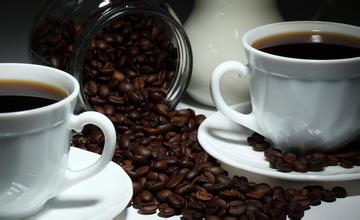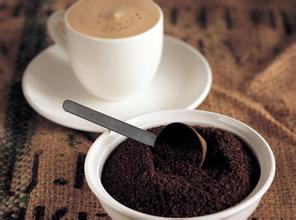Description of the characteristics and Flavor of Robska Coffee Bean introduction to the producing areas of taste varieties
Description of the characteristics and Flavor of Robska Coffee Bean introduction to the producing areas of taste varieties
In Ethiopia, the grading and quality control system of coffee is divided into three levels: producer, regional and national. All coffee is inspected by local inspection agencies before leaving the country of origin, and then re-tested at the coffee inspection and grading centers in Addis and Diredawa to determine its quality grade. Coffee is graded before auction and sale and is important for all groups involved in production, acquisition, export and consumption. Before export, coffee must also be sent to a national quality control agency for inspection to confirm that the origin and color meet the export standards to ensure the reputation of Ethiopian coffee.
At present, Ethiopia's coffee grading and quality control system mainly has two indicators: visual inspection and cup evaluation, including the color, cleanliness, origin, taste and characteristics of coffee beans. The export rating is marked by simple numbers, with the best washed coffee at level 5 and the best sun-cured coffee at level 4. After grading, mark the place of origin and then export. Exports are usually paid by letter of credit, which can not only reduce the risk of foreign exchange collection for exporters, but also give quality assurance to importers.
Ecuador means "equator" in Spanish. Due to the use of old-fashioned traditional harvesting and handling methods, Ecuadorian coffee is not included in the list of boutique coffee, so it is generally rare and unfamiliar.
Ecuador faces the Pacific Ocean, and near the equator, about 900km off its west coast, near the equator at 90 degrees west longitude, there is also a Galapagos Island, also known as Cologne, which produces the famous Galapago coffee. In order to protect the natural ecology, the Ecuadorian government has designated the archipelago as a national park and banned the use of chemical fertilizers, pesticides and other chemical agents, so coffee in the Galapagos Islands is recognized as organic coffee. Columbia beans, similar to Costa rica or Hawaiian Kona beans, are non-extreme coffee, rich in texture, but not as strong as Sumatra; rich in aroma, but not as good as the best Jamaican alpine flavor; sour, but not as sour as Antigua acid. It often has a caramel-like taste, similar to the aroma of pudding, lack of sour fruit, reminiscent of milk pancakes; it is also suitable for blending mixed coffee. Since the 1970s, with the full promotion of the Colombian government, many old trees have been replaced by new species with high yields. unfortunately, critics think that the new coffee is milder and more common than the old ones, and its quality is much lower than it used to be.
In the general coffee market, many people like to compare robusta and Arabica coffee beans, which is incorrect.
In fact, the Robusta species was originally a mutant of the Congo species (scientific name: Coffee Canephora), and it should be compared with the Alabica species.
Today, however, the Robusta species is commonly used by ordinary people, and it is not known that it is actually a variant of the Congolese species. Arabica coffee beans grow at colder high elevations in the tropics, and those high temperatures and low elevations that are not suitable for Arabica are the land of Robusta.
Robstado grows in lowlands 200-600m above sea level and likes warm climates. the temperature is 2429 ℃, and the requirement for rainfall is not high. However, this variety depends on insects or wind to pollinate, so it takes 11 months for coffee from pollination to fruit, which is longer than Arabica.

Important Notice :
前街咖啡 FrontStreet Coffee has moved to new addredd:
FrontStreet Coffee Address: 315,Donghua East Road,GuangZhou
Tel:020 38364473
- Prev

The difference between siphon pot and mocha pot-what are the instruments for brewing coffee
What is the difference between a siphon pot and a mocha pot-what are the utensils for brewing coffee? add an appropriate amount of pure water to the lower seat of the siphon pot (heated pure water can be used to shorten the time of boiling water. In this operation, the amount of water added is 2.5 cups (about 280 milliliters); under the condition of sufficient fuel in the alcohol lamp, ignite it and place it directly under the lower seat of the siphon pot.
- Next

Introduction of a cup of Italian espresso with how many ml portions of coffee
A cup of ml coffee machine introduces the pressure generated by the pump of the Italian coffee machine, which is roughly divided into shock type and rotary type. The vibrating type is small in size and low in cost, which is mostly used in domestic machines, such as XX coffee machine, pump pressure 15bar or pump pressure 19bar, which means that the pump pressure peak can reach 15bar or 19bar, but not stable at a single value, but fluctuates at 115b.
Related
- What brand of black coffee is the most authentic and delicious? what are the characteristics of the flavor of the authentic Rose Summer Black Coffee?
- Introduction to the principle and characteristics of the correct use of mocha pot A detailed course of mocha pot brewing coffee is described in five steps.
- Which is better, decaf or regular coffee? how is decaf made?
- How much is a bag of four cat coffee?
- How about four Cat Coffee or Nestle Coffee? why is it a cheap scam?
- Which is better, Yunnan four Cats Coffee or Nestle Coffee? How about cat coffee? is it a fake scam? why is it so cheap?
- How about Cat Coffee? what grade is a hoax? which instant coffee tastes better, four Cat Coffee, Nestle Coffee or G7 coffee?
- Process flow chart of coffee making-Starbucks coffee making process what coffee tastes good at Starbucks
- The top ten best coffee beans in the world Rose summer coffee or Tanzanian coffee tastes good
- Yunnan four cat coffee is good to drink?_four cat coffee is a big brand? four cat blue mountain coffee is fake?

